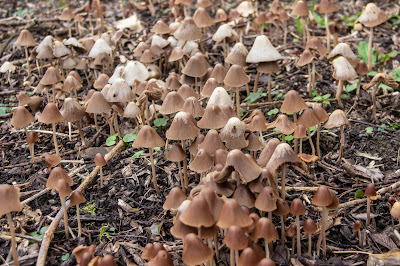 |
| Our starting point: St Winwalo church at Tremaine. Dating from the 12th century, it is one that we've visited quite often. |
 |
| The variegated leaves of Ivy-leafed Cyclamen - Cyclamen hederifolium - presaging what will be a spectacular display of blooms. |
 |
| This is one I prepared earlier - last year, I think, in pretty much the same spot as the previous image. This is what is to come in a few weeks. |
 |
| The delightful blue flowers of Spring Squill - Scilla verna. Squill is a corruption of the Latin, Scilla. We've seen it more often on the various coastal footpaths we've walked on. |
 |
| This one is an anemone of some kind. Not a wild flower and may have been planted in the graveyard in memory of someone. Botanists would class this as an 'escapee'. |
 |
| No, it's not my farm, just an unexpected coincidence. |
 |
| A rental property slate sign that caught my eye. |
 |
| This panorama typifies the countryside we walked through. Rolling pasture punctuated with quite steep valleys cut by streams. |
 |
| An early dandelion 'clock'...……... |
 |
| ……….that looks better/different in monochrome. |
 |
| White Deadnettle interspersed with Common Nettle. Lots of shades of fresh green. |
 |
| Our view of St Winwalo as we approached it at the end of our walk. |
 |
| We can't go passed without taking in the tranquility of the unadorned interior. |





No comments:
Post a Comment